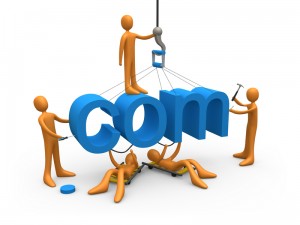10 Tips to Designing a Great Website
 Maybe you are starting out with a new website, or are thinking it is time for a website redesign, and upon looking around you see that there are tons of websites out there, with tons of different strategies in place. So how do you know whether or not you have built your website correctly, or are going to build it correctly? Believe it or not, there are some sure-fire design tips that will give you a step ahead of the other websites that are unaware of these guidelines. If you decide to follow these you may not achieve Internet success, but these tips will surely help you start out on the right foot.
Maybe you are starting out with a new website, or are thinking it is time for a website redesign, and upon looking around you see that there are tons of websites out there, with tons of different strategies in place. So how do you know whether or not you have built your website correctly, or are going to build it correctly? Believe it or not, there are some sure-fire design tips that will give you a step ahead of the other websites that are unaware of these guidelines. If you decide to follow these you may not achieve Internet success, but these tips will surely help you start out on the right foot.
Know The Audience
When setting out to design a website, you must know who is going to look at your website. A website that misses its target audience is doomed for failure right from the very beginning. This comes in to play for practices like Flash Use (great for people under 25, but horrible for people who use apple devices), color schemes (I build a lot of sites for the Phoenix area, so Sedona Red is in high demand), and fonts (technical loves Tacoma the way children love Comic Sans). All of these things will come in to play through the design process, so you must know your audience!
Above The Fold is Important
Above the fold refers to the content that people see on your web page without scrolling down. This part of your web page must have the message you want to convey to your audience. Users these days have gotten used to scrolling, but it is still a good practice to grab their eye from the minute they land on your website.
Have a Call to Action on Your Landing Page
A Call to action typically is a contact form, but may also be a purchase button, or even a video that you may want them to watch. Internet users generally do not want to guess. You need to make sure that they are directed to your call to action right from the beginning. This should be on your landing page (whichever page your viewers arrive at first) because you do not want them to have to find it.
Keep Images Small and Optimized
Images are the main reason that a web page may take too long to load. Especially now that Google penalizes web pages with long loading times, you really need to make sure that your images are optimized to be a web graphic and have a small file size. If you find your images are too large, try reducing the jpeg quality, or reduce the pixel size of your image.
Use Lists Instead of Paragraphs Wherever Possible
Web users scan instead of read as a general rule of thumb. Lists are great for conveying tons of key points quickly as opposed to long lines of in depth reading that may overwhelm the user.
Follow a “Two Click” Rule
A “Two Click” rule means that a user should not have to click more than two clicks in order to go anywhere on your website. With the invention of the Drop-Down Menu many years ago to allow for sub-menu items, unless you have an extremely large website, doing this should not be hard.
Use The Spellchecker
What else is there to say on this subject? Websites with proper spelling and grammar look professional; websites with spelling errors do not.
Check Your Website’s Reading Level
The reading level of your website’s written content should be at the “High School” level. This may seem sad to some people, but you have to cater to the masses. The average web user has a high school reading level, so that is the best level. If your website caters to a niche with a different reading level (ie. a university website) then you may want to ignore this tip.
Keep Your Links Current
A website with broken links is not only annoying, but makes the sight seem old and obsolete. As part of your ongoing maintenance, you should periodically check the links on your website to make sure they are up to date.
Stay Up to Date
Websites that do not keep current can quickly fall into the feeling of being old and obsolete. Staying current with the technology and website design practices is essential to compete with today’s web world. If you are using a Content Management System like Joomla! or WordPress, make sure that you upgrade whenever possible unless you have plug-ins, modules, or components that you absolutely need for your website that are incompatible with the latest release.
These tips are not only designed to keep your website at its best, but are essential to compete in the worldwide web. If there are any other tips you think I have missed, I would love for you to leave me a comment.




